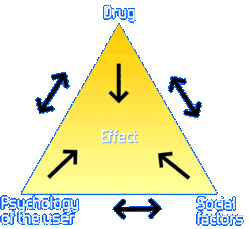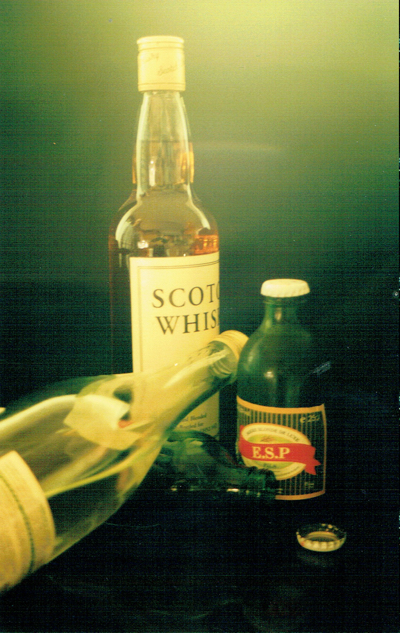Addictions
 Substances
Substances

'Why are you drinking?' demanded the little prince.
'So that I may forget,' replied the tippler.
'Forget what?' inquired the little prince, who was already sorry for him.
'Forget that I am ashamed,' the tippler confessed, hanging his head.
'Ashamed of what?' insisted the little prince, who wanted to help.
'Ashamed of drinking!' the tippler brought his speech to an end, and sh
ut himself up in an impregnable silence.
And the little prince went away puzzled.
'The grown-ups are certainly very, very odd,' he said to himself.'
Antoine de Saint-Exupery, 'The Little Prince'
Today as our world gets faster, more advanced and more chaotic so it leaves many people on the fringes looking for a release, a way out, trying to find meaning. Drugs or substances for many people, as in the poem above, have provided them an escape from this 'crazy' world that they cannot understand.
The addiction to substances today has massive ramifications for all levels of society. Substances may include legal and/or illegal drugs. Alcohol is often termed 'our most popular drug' though some people do not acknowledge it as a drug. Despite this the deaths (around 33,000 every year***) attributable to this drug are only overshadowed by nicotine. Alcohol, both the positive and negative use, is mentioned in the Bible and dates back to the dawn of creation.
There are four main ways in which substances are taken:
- Orally
- Sniffing
- Smoking
- Injecting
There are a variety of methods for classifying substances (Brands et al, 1998) such as by their origin; street name; legality or chemical structure.
It is not quite as simple to think that substances can be neatly classified into various groups depending on the effect they have on the brain or the central nervous system. Cause and effect statements are often made such as 'alcohol is a depressant and you will always feel such and such after taking it'. 'Cocaine on the other hand is a stimulant and you will always feel 'like this' after taking it'. These statements can provide a guide to what may happen to the person, in many cases they will be correct, but they can on the other hand also be misleading.
There are a number of reasons for this:
Firstly drugs affect different people in different ways: The factors may depend on, for example:
- The dose which was taken
- The specifics of the individual: e.g. the sex; Body weight; Mood of the person
- The atmosphere where the drugs were taken
- Whether the person was aware of what was meant to happen to them.
Secondly people who take drugs will often take more than one drug at a time, polydrug use. The reason for this may be to enhance or counter the effects of another drug.
Thirdly the groups are very broad and generalised and are based on average people. Different substances can also have different effects on different parts of the body. Cocaine for instance has a stimulant effect on the central nervous system and anaesthetic effects on the skin. In addition, some of the substances (e.g. cannabis, ecstasy, solvents, ketamine) can be in more than one group.
Fourthly in the case of illegal drugs the individual can never be totally sure exactly what they have taken and what amount. Drugs such as heroin for example may be cut or mixed with other things such as brick dust, glucose, curry powder, gravy mix, flour, and cleaning powder. This of course makes the quantity of drug go further and increases the profit. The main problems here can be twofold. Whilst injecting brick dust into the veins is not going to help them, the individual may feel they have to buy a larger quantity of heroin because it is believed to be diluted with other things. Not knowing the quality of the drug being taken, the realisation it was in fact pure may come too late. Many people, in this way, have overdosed. Especially for instance those recently released for example from prison or rehabs
It might be more accurate to refer to the following chart when talking about the effects of drugs on the body, which considers not only the drug itself, but also the surroundings where the drug is taken, and the expectation of the individual.

Interaction of drug, individual/psychological factors and social factors in determining drug effects Gossop M. 2000*
The point being made above is that the effects of the drugs on the body are unpredictable and this should always be borne in mind.
The three broad groupings mentioned above relating to the effect they have on the central nervous system or the brain are drugs that:
- Depress the nervous system (which here includes those that reduce pain though they do have a slightly different effect).
- Stimulate the nervous system.
- Alter perceptual function.

Depressants
Depressants have the opposite effect to stimulants they can slow down the heart rate, Lower the blood pressure and the metabolism. They can cause the person to sleep and can act as a painkiller, numbing the nerves. Some popular examples may include alcohol, heroin, methadone, temazepam and valium.
Stimulants
Stimulants generally increase the heart rate, the blood pressure and the metabolism. They make the person more active, more alert. Some popular examples may include caffeine, cocaine, ecstasy, nicotine and speed.
Hallucinogenics
Hallucinogenics can distort the person's visual and aural perceptions, giving them a false sense of reality and very vivid dreams and images in their brain. Some popular examples may include acid, cannabis, LSD and magic mushrooms.
One of the earliest writings about alcohol was written over two thousand years ago in the Bible and records, what we may feel is a somewhat modern day phenomenon, withdrawal:
'Who has woe? Who has sorrow? Who has strife? Who has complaints? Who has needless bruises? Who has bloodshot eyes? Those who linger over wine, who go to sample bowls of mixed wine. Do not gaze at wine when it is red, when it sparkles in the cup, when it goes down smoothly! In the end it bites like a snake and poisons like a viper. Your eyes will see strange sights and your mind imagine confusing things. You will be like on sleeping on the high seas, lying on top of the rigging. "They hit me," you will say, "but I am not hurt! They beat me, but I don't feel it! When will I wake up so I can find another drink?"'
Proverbs 23 v 29 - 35
(Holy Bible - New International Version by permission Hodder & Stoughton Ltd.)
Cannabis
The debate about cannabis is ongoing and the pros and cons of the legalisation of the substance which some term a 'gateway drug'. This site is not the place to debate the rights and wrongs, rather to give you the facts and leave you to make your own informed decisions.
The facts are cannabis can cause cancer as it does contain four to five times the lung-cancer-producing hydrocarbons as tobacco does; it can lead to heart problems as the heart rate increases by 20-40 beats per minute; it can cause memory loss as it is absorbed into the brain tissue. Acute or chronic use leads to euphoria, decreased mental functioning, exacerbation of asthma, sore throat, paranoia and mood shifts. The debate about the prescribed medical use for cannabis is continuing, as there is evidence that it can help alleviate migraines, multiple sclerosis, glaucoma and anorexia, as it stimulates the appetite. **
* Gossop M (2000) Living with Drugs 5th Ed. Ashgate
** Health : cannabis people deserve the truth. Addiction Today vol. 12 No 67
*** Health Education Authority. March 1997